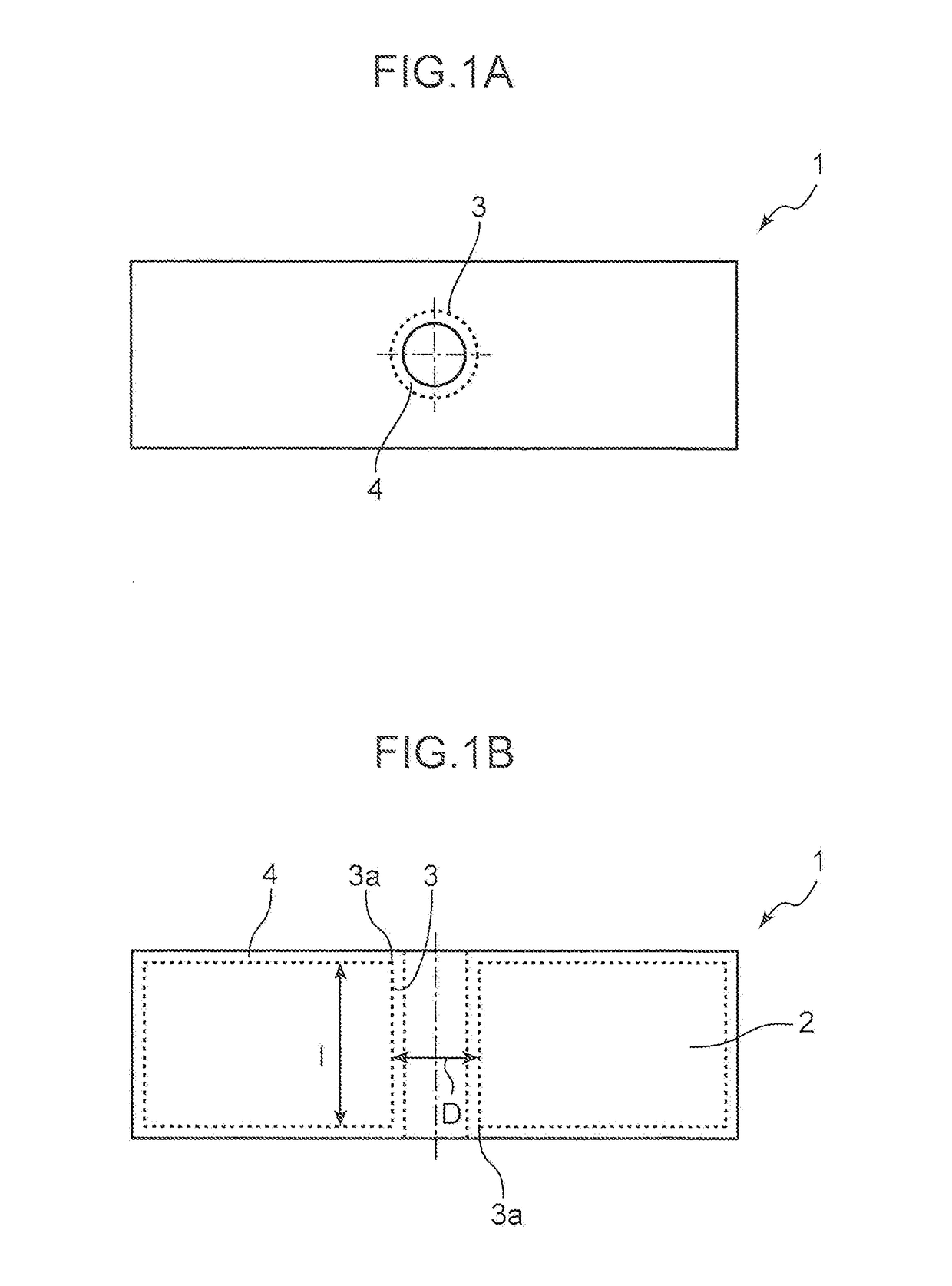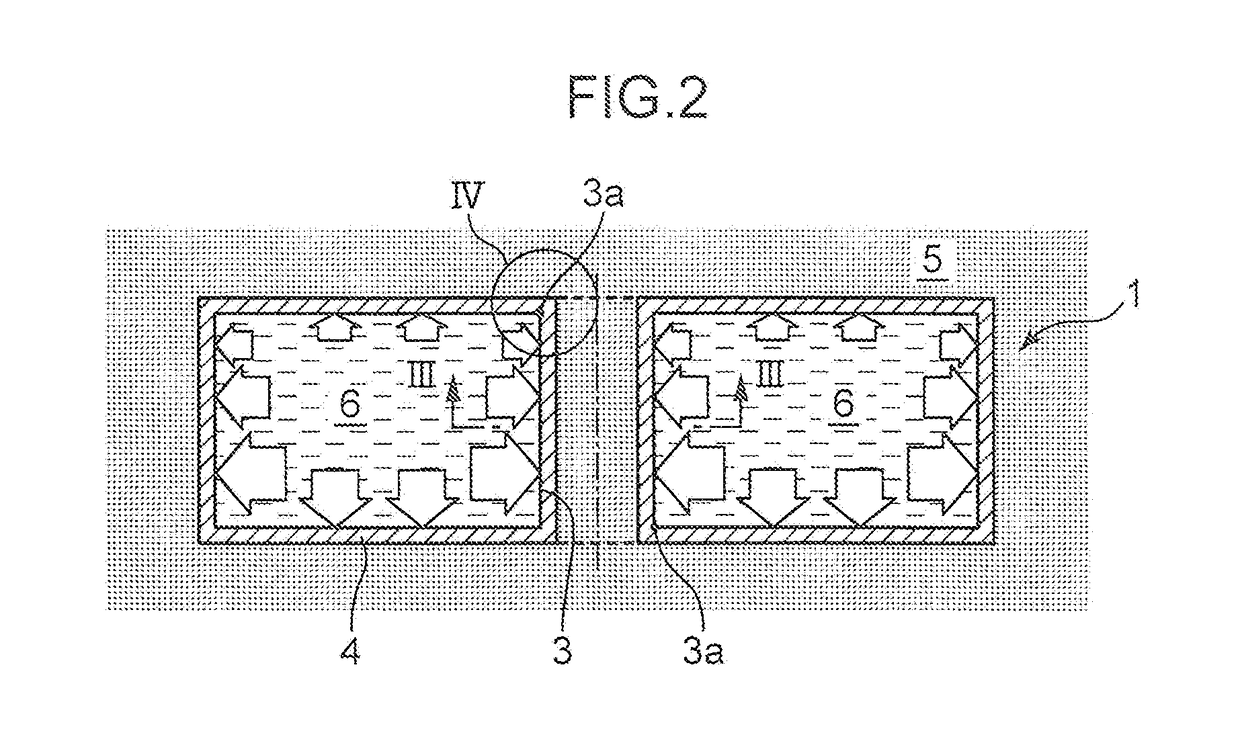Casting method using lost foam
- Summary
- Abstract
- Description
- Claims
- Application Information
AI Technical Summary
Benefits of technology
Problems solved by technology
Method used
Image
Examples
example
[0092]FIG. 13A and FIG. 13B are a top and a side view, respectively, of a casting pattern of Example 1, and FIG. 13C is a side view of the casting pattern of FIG. 13B seen from a direction E. As illustrated in FIGS. 13A, 13B, and 13C, the casting pattern of Example 1 is a foam pattern 12 having a rectangular parallelepiped shape of 100 (mm)×100 (mm)×200 (mm), the foam pattern 12 being provided with a hole 13 with a diameter of 14 mm extending from the upper surface to the lower surface and a hole 14 with a diameter of 10 mm extending from one of a pair of opposite sides to the other. The lengths of the holes 13 and 14 are both 100 mm. A casting having two small holes was made using the casting pattern 11.
[0093]Gray cast iron (JIS-FC250) was used as molten metal. A mold wash (B in Table 1) that was obtained by substituting D=14 (mm) into the formula (1) and was formed of silica-based aggregate with an aggregate diameter of 100 μm or less was used for casting. SiO2-based silica sand w...
PUM
 Login to View More
Login to View More Abstract
Description
Claims
Application Information
 Login to View More
Login to View More - R&D
- Intellectual Property
- Life Sciences
- Materials
- Tech Scout
- Unparalleled Data Quality
- Higher Quality Content
- 60% Fewer Hallucinations
Browse by: Latest US Patents, China's latest patents, Technical Efficacy Thesaurus, Application Domain, Technology Topic, Popular Technical Reports.
© 2025 PatSnap. All rights reserved.Legal|Privacy policy|Modern Slavery Act Transparency Statement|Sitemap|About US| Contact US: help@patsnap.com



